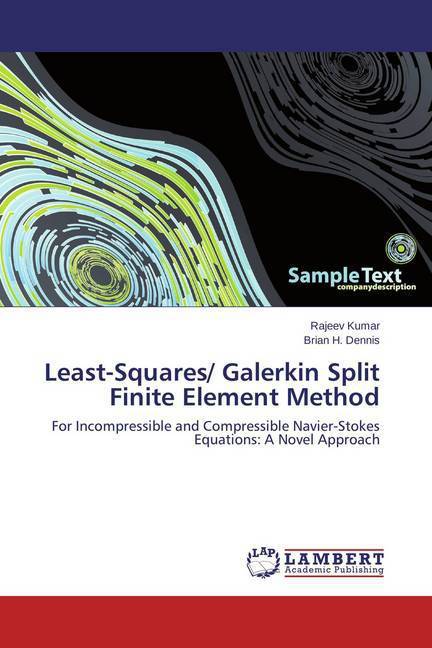
- Afhalen na 1 uur in een winkel met voorraad
- Gratis thuislevering in België vanaf € 30
- Ruim aanbod met 7 miljoen producten
- Afhalen na 1 uur in een winkel met voorraad
- Gratis thuislevering in België vanaf € 30
- Ruim aanbod met 7 miljoen producten
Zoeken
Least-Squares/ Galerkin Split Finite Element Method
For Incompressible and Compressible Navier-Stokes Equations: A Novel Approach
Rajeev Kumar, Brian H. Dennis
Paperback | Engels
€ 72,45
+ 144 punten
Omschrijving
The least-squares finite element method (LSFEM) has many attractive characteristics such as the lack of an inf-sup condition and the resulting symmetric positive system of algebraic equations unlike Galerkin finite element method (GFEM). However, the higher continuity requirements for second-order terms in the governing equations force the introduction of additional unknowns through the use of an equivalent first-order system of equations or the use of C¹ continuous basis functions, limiting the application of LSFEM to large-scale practical problems. A novel finite element method is proposed that employs a least-squares method for first-order derivatives and a Galerkin method for second order derivatives, thereby avoiding the need for additional unknowns required by a pure LSFEM approach. When the unsteady form of the governing equations is used, a streamline upwinding term is introduced naturally by the least-squares method. The method is stable for convection-dominated flows and allows for equal-order basis functions for both pressure and velocity. Various incompressible and compressible flow benchmark problems have been solved using low-order C continuous elements.
Specificaties
Betrokkenen
- Auteur(s):
- Uitgeverij:
Inhoud
- Aantal bladzijden:
- 172
- Taal:
- Engels
Eigenschappen
- Productcode (EAN):
- 9783659508516
- Verschijningsdatum:
- 12/05/2015
- Uitvoering:
- Paperback
- Afmetingen:
- 150 mm x 220 mm
- Gewicht:
- 259 g

Alleen bij Standaard Boekhandel
+ 144 punten op je klantenkaart van Standaard Boekhandel
Beoordelingen
We publiceren alleen reviews die voldoen aan de voorwaarden voor reviews. Bekijk onze voorwaarden voor reviews.








